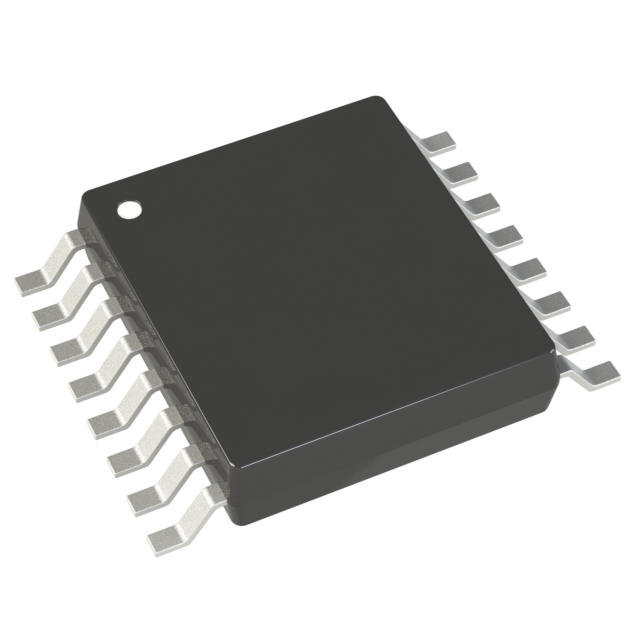-Original content, please do not reprint.
What is a low noise amplifier (LNA)?
• Low noise amplifier (LNA) is a signal conditioning device, mainly used to amplify weak signals. As the core component of the front end of the RF receiver, LNA needs to have the following key characteristics: extremely low noise figure, high gain performance, wide dynamic range, good input impedance matching, and certain frequency band selection capabilities.
•LNA usually uses Class A magnification mode, with an on-conductance angle of 360 degrees. Since it operates in a small signal amplification state, nearly linear signal amplification can be achieved, so the linear distortion of the output signal is extremely low.

Characteristics of low noise amplifiers
• The low noise amplifier (LNA) is located at the first stage of the front end of the receiver, and its noise figure directly affects the overall performance of the system, so its noise level needs to be minimized as much as possible.
• Low noise amplifiers (LNAs) are mainly used to amplify extremely weak radio frequency signals, so they must operate in a highly linear amplification state.
• The input impedance of a low noise amplifier (LNA) requires good impedance matching with the front-end antenna filter or antenna to ensure efficient signal transmission and reduce reflection loss.
• Low noise amplifiers (LNAs) are usually designed as band-pass amplifier structures to achieve the necessary frequency selective functions.
The role of low noise amplifier
• As the core device of mobile communication base station, low noise amplifier (LNA) is specially designed to improve the performance of wireless communication systems. It is mainly used in the following key scenarios: transceiver wireless communication module, over-tower amplifier (TMA), signal combiner, relay device, and remote/digital wireless broadband head-end system. The device has achieved an industry breakthrough in noise figure (NF) performance. At present, the field of wireless communication infrastructure is facing the challenge of increasingly tight spectrum resources, and how to achieve optimal signal quality and coverage within a limited spectrum bandwidth has become the focus of the industry. Among them, receiver sensitivity, as the core indicator of base station reception link design, has a decisive impact on system performance.
Key parameters of low noise amplifier
• Gain: As the core performance indicator of LNA, it represents its amplification ability to input signals, and the unit of measurement is decibels (dB). This parameter directly determines the signal amplification effect. The higher the gain value, the stronger the signal amplification capability of the device.
• The Noise Figure (NF) is a key parameter for evaluating LNA noise characteristics, which is defined as the ratio of the signal-to-noise ratio at the output of the amplifier to the input of the signal-to-noise ratio (in dB). This parameter directly reflects the degree of additional noise introduced by LNA. The lower the NF value, the smaller the noise contribution inside the device and the higher the signal fidelity, which has a decisive effect on improving the system reception sensitivity.
• Input/Output Impedance Matching is a key electrical parameter of LNA, which characterizes its matching degree to the front and rear circuit interfaces (usually 50Ω or 75Ω). Good impedance matching can effectively reduce signal reflection loss (VSWR < 1.5) and achieve a power transmission efficiency of >90%, which is crucial to ensuring system cascade performance and standing wave ratio index.
• Frequency Range refers to the operating frequency band in which LNA can maintain stable gain, low noise figure and good matching characteristics. LNA is usually optimized for specific application bands, such as 2.4 GHz (Wi-Fi, Bluetooth) or 5.8 GHz (ISM band, wireless communication) scenarios.
• Linearity reflects the nonlinearity of the LNA when processing the input signal. Good linearity ensures fidelity of waveform and amplitude during signal amplification, minimizing distortion.
• Saturation Output Power refers to the maximum output power limit that the LNA can reach when operating in the nonlinear region. This parameter reflects the amplifier's power processing capability, and the higher saturated output power indicates that the LNA can maintain effective operation at higher input signal levels and has stronger output driving capabilities.
The above indicators are not independent and are related.
Transistor high frequency equivalent circuit
• Modern mobile communication systems put strict requirements on integrated circuits with low cost, low power consumption and high integration. To achieve high integration of RF front-end, the choice of process technology is crucial. The current mainstream RF integrated circuit manufacturing processes include three technical routes: bipolar, gallium arsenide (GaAs) and complementary metal oxide semiconductor (CMOS).
• Bipolar process technology mainly includes pure bipolar (BJT), BiCMOS, and silicon germanium heterojunction bipolar transistor (SiGe HBT). Compared with CMOS processes, bipolar transistors show significant advantages in the following two aspects:

GaAs CMOS process The gallium arsenide (GaAs) process uses Group III-V compound semiconductor materials, which have excellent physical properties. This process technology is mature and stable, and its device can operate at a maximum range of 50-100GHz.
CMOS process CMOS devices have low noise and good linearity, and can achieve high integration between RF front-end modules and digital baseband processing circuits. This single-chip integration solution significantly reduces system power consumption and size, and has become the mainstream development direction of modern mobile communication integrated circuits.
Application scenarios
• Communication system: An electronic system for radio signal reception and processing. Typical applications include mobile communication base stations, satellite ground reception terminals, wireless local area network (Wi-Fi) access equipment, etc.
• Radar system: Dedicated to receive and enhance the weak echo signals reflected by the target, achieving high sensitivity detection.
• Satellite reception: used by ground stations to receive and amplify weak signals transmitted from satellites.
• Navigation system: used to amplify satellite signals in receivers such as GPS to ensure stable reception.








